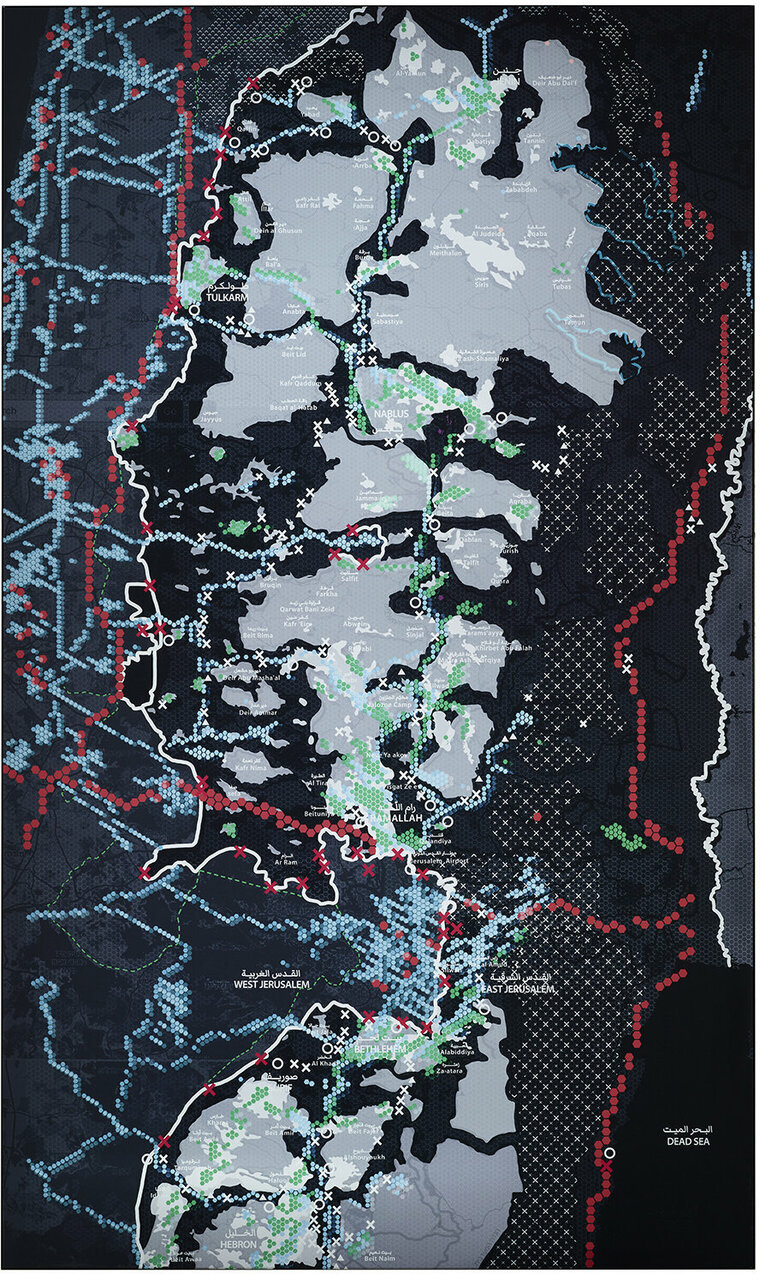Jumanah Abbas’ There’s a Vicious War Launched in the Area of Frequencies, 2023, is a detailed mapping of the systems of surveillance put into place in the West Bank. This digital map brings to the forefront the intricate web that has to be installed by the military in order to keep tabs on every single movement or interaction within the confines of this space. The thick white line is the separation or apartheid wall surrounding the West Bank. Along it, there are large red Xs, which signify the checkpoints at the separation wall. Within the territory, there are smaller white Xs for checkpoints, and circles to represent security gates. The red hexagons almost fully encircling the area represent the cellular network for Israeli military operations.
This work provides the viewer with a concrete, visual representation of the confined space and apartheid system in place. It makes clear how a group of people are dehumanized by being subjected to an environment designed to control their every move, and in the process exacerbate the sense of humiliation they must feel on a daily basis. The control system in place is a mixture of physical apparatuses, such as checkpoints and security gates, which force Palestinians to plan their entire days around this intentional disruption, as well as technological/algorithmic apparatuses, such as cellular tracking frequencies, cameras with advanced facial recognition, and artificial intelligence apparatuses.
Abbas’ work brings to the foreground Michel Foucault’s notion of panoptic techniques of dominance. Inspired by Jeremy Bentham’s architectural prison design, in the panopticon, prison cells are open to a central tower where prisoners can neither see one another nor the prison guards in the tower. But the belief that they are under constant surveillance keeps them disciplined and docile. As such, they internalize the sense of being constantly watched. By mapping the telecommunication structures in the West Bank, Abbas highlights how geopolitical and military power is exerted through surveillance technologies.




